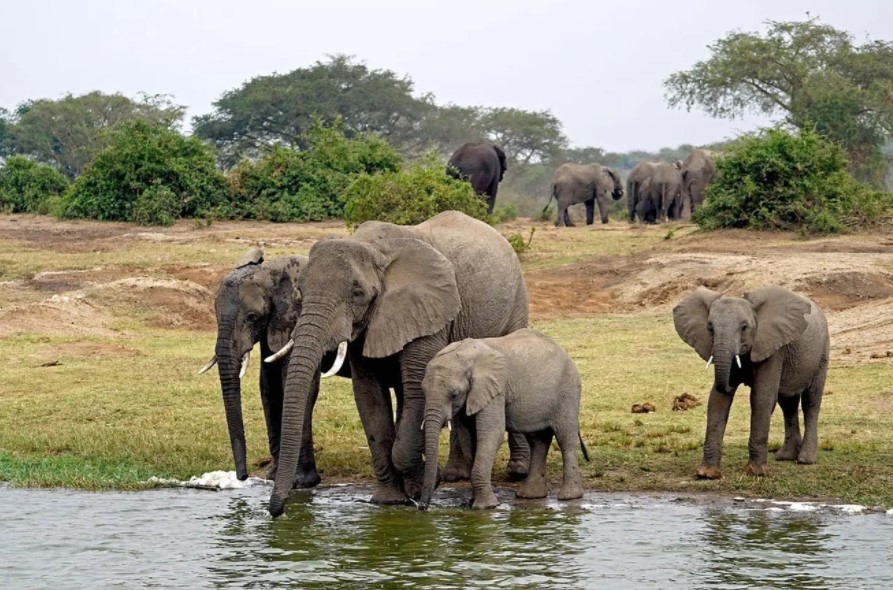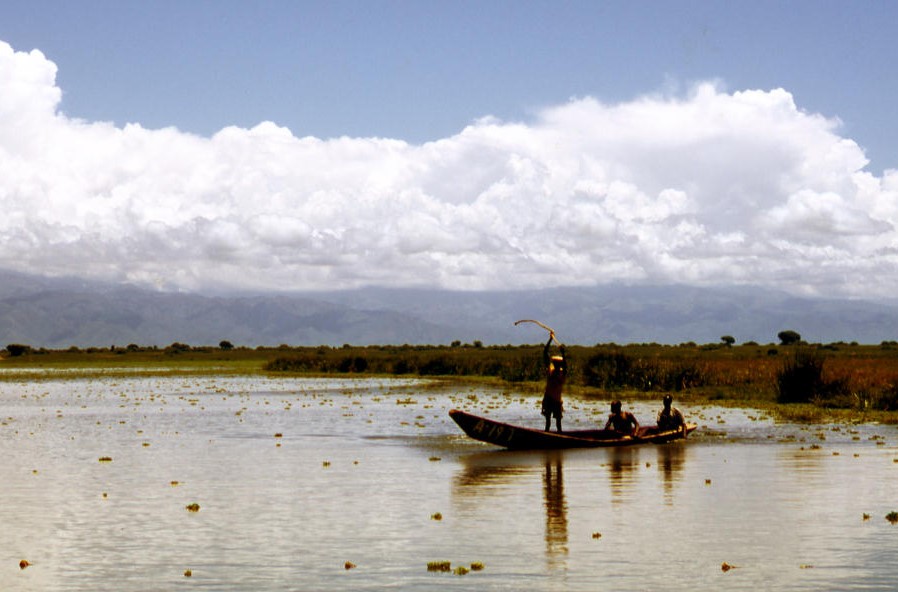It is located in western Uganda, in Queen Elisabeth National Park, and is part of the East African Rift Valley lakes, covering approximately 250 square kilometers. The lake is not all that deep and it is just 2.4 meters deep. This is not a deep lake, but it is so much interesting with various activities being carried out on the lake, including sport fishing, canoeing, and hippo viewing.
The lake receives water from the mighty Rwenzori mountains since the mountain is the catchment for several rivers, including the river Mobuku, . The river Mpanga and the river Rumi. This water is carried away from Lake George through the Kazinga channel, which is located in Queen Elizabeth National Park. The Kazinga channel connects or links Lake Gorge to Lake Edward, and still, these two lakes are found within Queen Elizabeth National Park.
There are two rainy seasons in Lake George, with rainfall peaks in May and October, with a monthly mean rainfall ranging from 3 to 194 mm. This lake is incredibly fertile, and fishing is quite profitable here. Fortunately, this lake has received some attention.
Lake Gorge, like other lakes, has several tourism potentials and attractions that any visitor would like to explore when visiting this great lake, such as the magic forest, enjoying the Fort William Henry museum, Saratoga Race Course, having the wonderful great escapes, to name a few.
The lake gorge in Queen Elizabeth National Park is bordered by wetland grass, which supports a diverse range of fauna, including more than 150 bird species. The marshes are home to a variety of species, including the Sitatunga antelope and elephant. Because of its great biodiversity, Lake George was recognized as Uganda’s first Ramsar site in March 1988. Many fish species, notably the Nile tilapia and the Haplochromis, live in Lake George, which also feeds various fishing settlements.
Still the lake possesses some of the major islands. Kankuranga, Iranqara, and Akika are the three main islands of this lake. Different herbivores, particularly fish like the cyclopoid copepod Thermocyclops hyalinus, Tilapia nilotica, and Haplochromis nigripinnis, dominate the biodiversity of this lovely Lake George.
Activities at Lake George in Queen Elizabeth National Park
Enjoy the bird watching activities at Queen Elizabeth National Park. Lake George is a birder’s dream come true, Lake George is a birder’s dream come true. Over 150 bird species call the lake home, including the African jacana and the uncommon saddle-billed stork. Tourists who wish to explore Lake George’s enticing waters should take a boat tour or go canoeing. Long nature walks around Lake George are soothing and a terrific way to unwind after a safari in Queen Elizabeth National Park.
Lodges and lodges around Lake George
One of the best accommodation facilities here is the Elephants Plains Lodge. This is a brand-new luxury lodge in a breathtaking location. Elephant Plains Lodge has a panoramic view of Queen Elizabeth National Park’s grasslands and Lake George. Six twin en-suite cottages with private verandas, as well as family cottages with two en-suite bedrooms that can sleep up to five people, are available. Elephant Plains Lodge was designed to take advantage of the natural beauty of the area, and each room offers a view of Lake Kikorongo. The resort’s eco-friendly swimming pool is the perfect place to unwind after a busy day.
Kasenyi Safari Camp is around 5.17 kilometers from Lake George, on the border of Lake Bunyampaka. The camp is made up of eight tents with thatched roofs that are erected on platforms. Each tent features its own patio with a stunning view, an en-suite bathroom, and a king-sized bed. The restaurant provides delicious food as well as free Wi-Fi. At night, you can enjoy the sounds of the woods from the comfort of your king-sized bed



Comment (0)